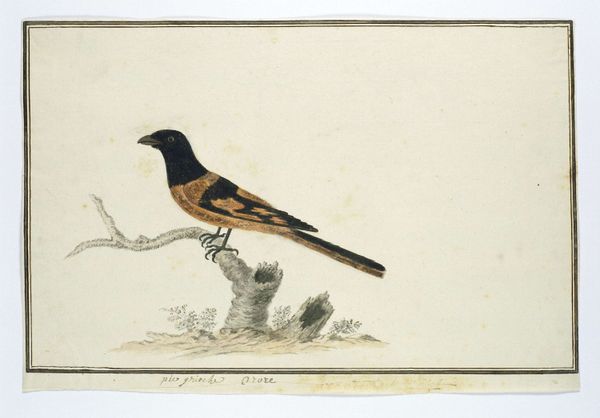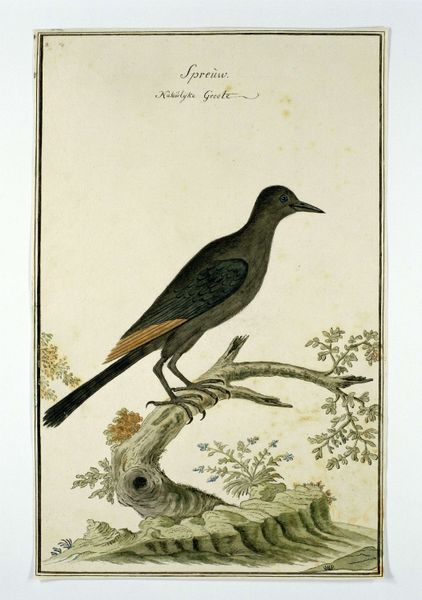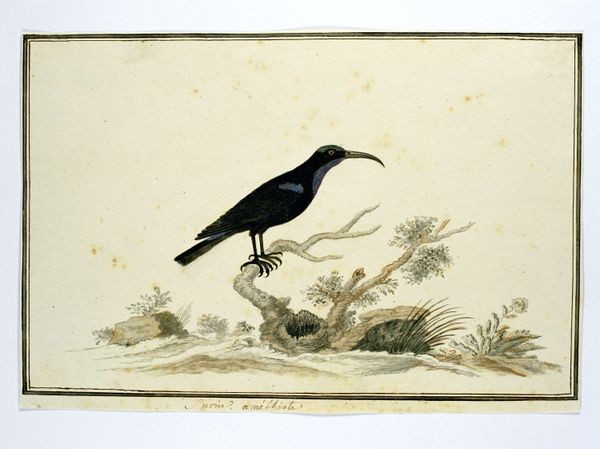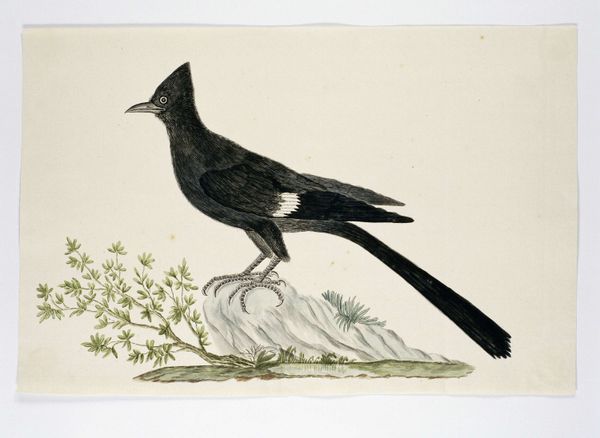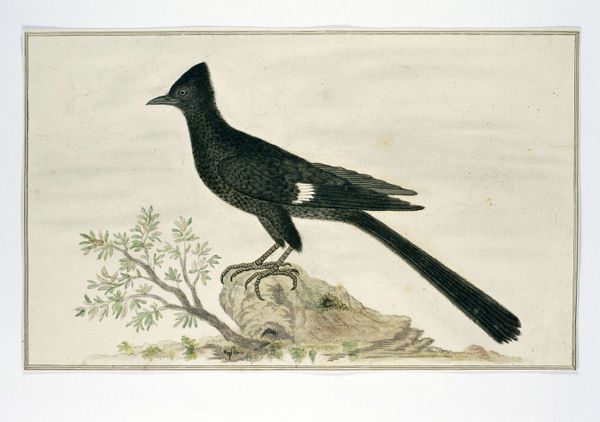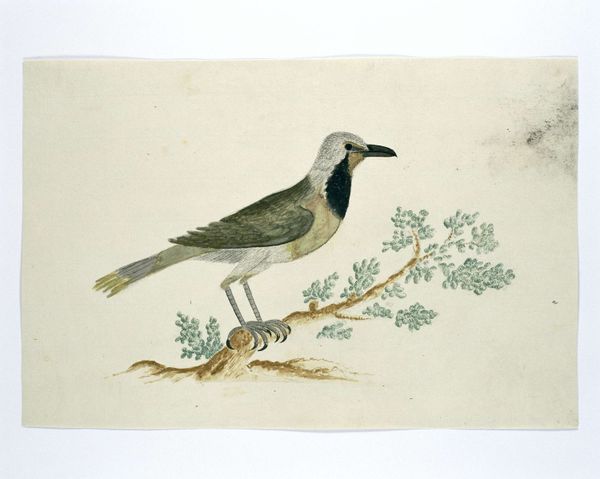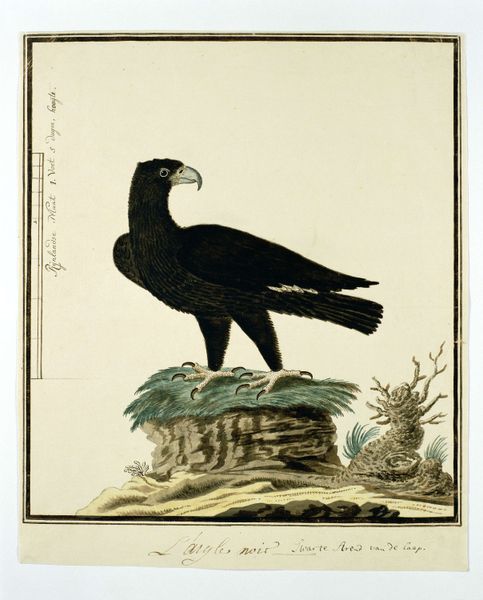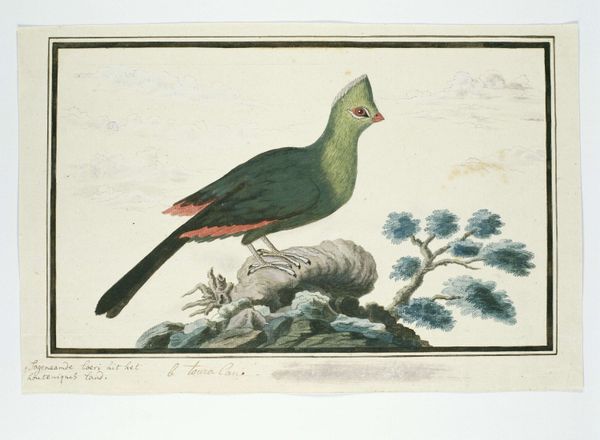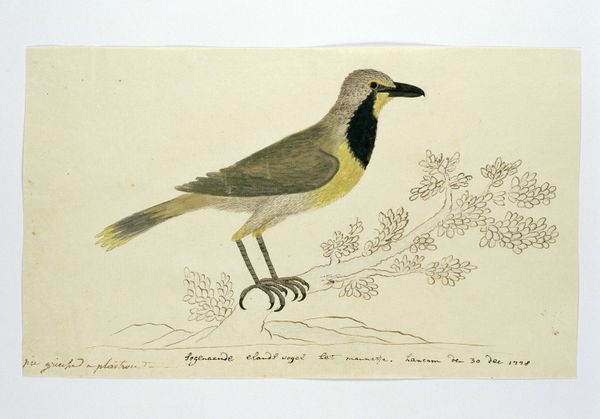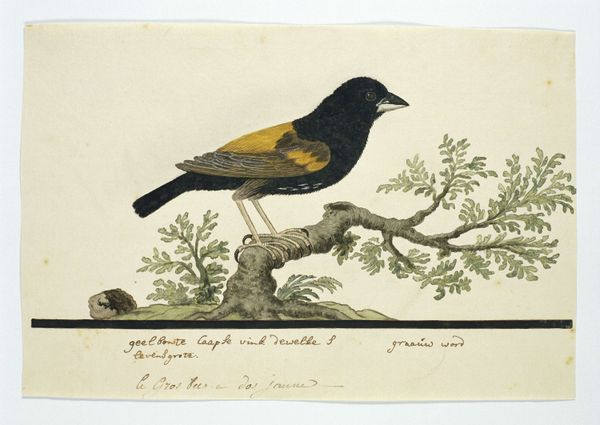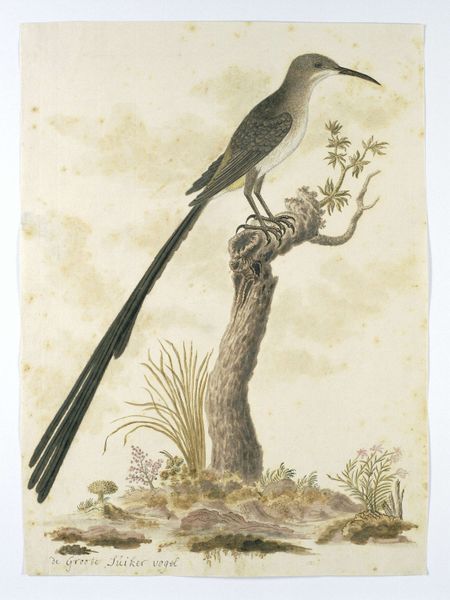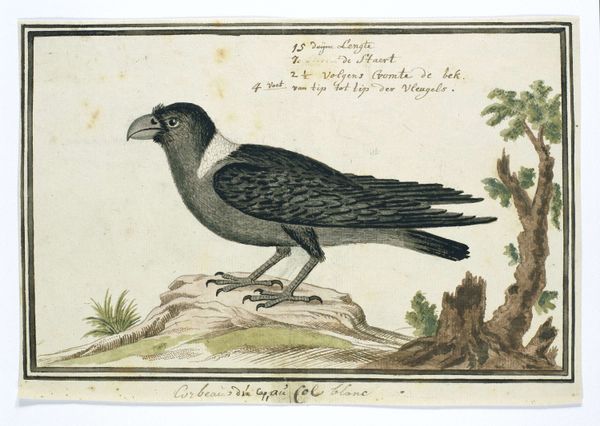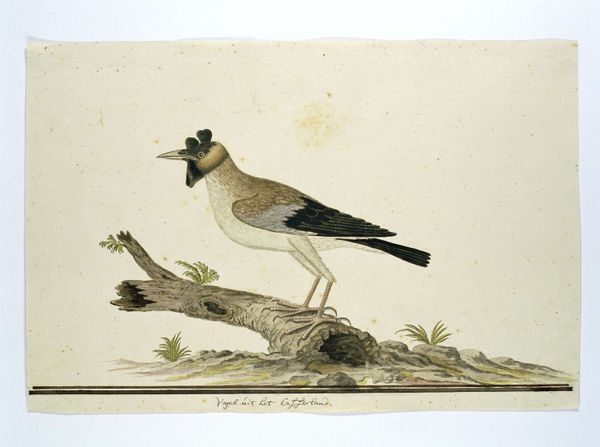
Dimensions: height 660 mm, width 480 mm, height 308 mm, width 428 mm, height 250 mm, width 385 mm
Copyright: Rijks Museum: Open Domain
Curator: This delicate watercolor and ink drawing on paper is titled "Terathopius ecaudatus (Bataleur)." It's attributed to Robert Jacob Gordon, and believed to date back to possibly 1778. What are your initial thoughts? Editor: The stark contrast between the dark bird and pale backdrop is quite striking. There's an air of detached observation, yet the detailed rendering of the feathers and branch hints at something deeper. Curator: The artist’s choice of watercolor as a medium interests me, and how the Romanticist style intersects with scientific documentation. Consider the implications: paper was scarce. Ink and watercolor had to be mixed from specific materials. Time spent. These choices emphasize labor involved in creating and how it serves its purpose as scientific illustration. Editor: Absolutely. The bataleur, this striking raptor, is almost regal in its pose. The sharp beak, piercing eyes… It's not just an image of a bird. Gordon seems to have captured a certain fierce essence, something tied to ideas of freedom, power. Hawks often evoke potent cultural symbolism. Curator: Yes, the artist’s position embedded within larger systems, as the labor of documentation and representation serves colonial knowledge production about the natural world of South Africa in that era. Also, that rigid frame—a self-contained package, a commodity ready for transport back to Europe. Editor: That's interesting. The frame becomes symbolic of imposed order, contrasting the wildness it contains. Notice how those small plants in the scene carry their own delicate symbolism, each species representing a micro-environment within the broader landscape. Each detail like those little sprouts suggests renewal, cycles… Curator: It is a study in tensions. I see both the delicate process of careful observation. The artistic creation of illustrations served the economic aims to colonize and understand resources from the Global South. Editor: So the question becomes, are we simply admiring an elegant image, or are we acknowledging its complicated birth from labor and ecological destruction? I think it's a little of both. Curator: Precisely. This watercolor challenges us to engage with the intertwined threads of artistic representation, scientific advancement, and economic structures in South African history. Editor: It's an artwork that keeps whispering, revealing layers of meaning each time you look.
Comments
No comments
Be the first to comment and join the conversation on the ultimate creative platform.
